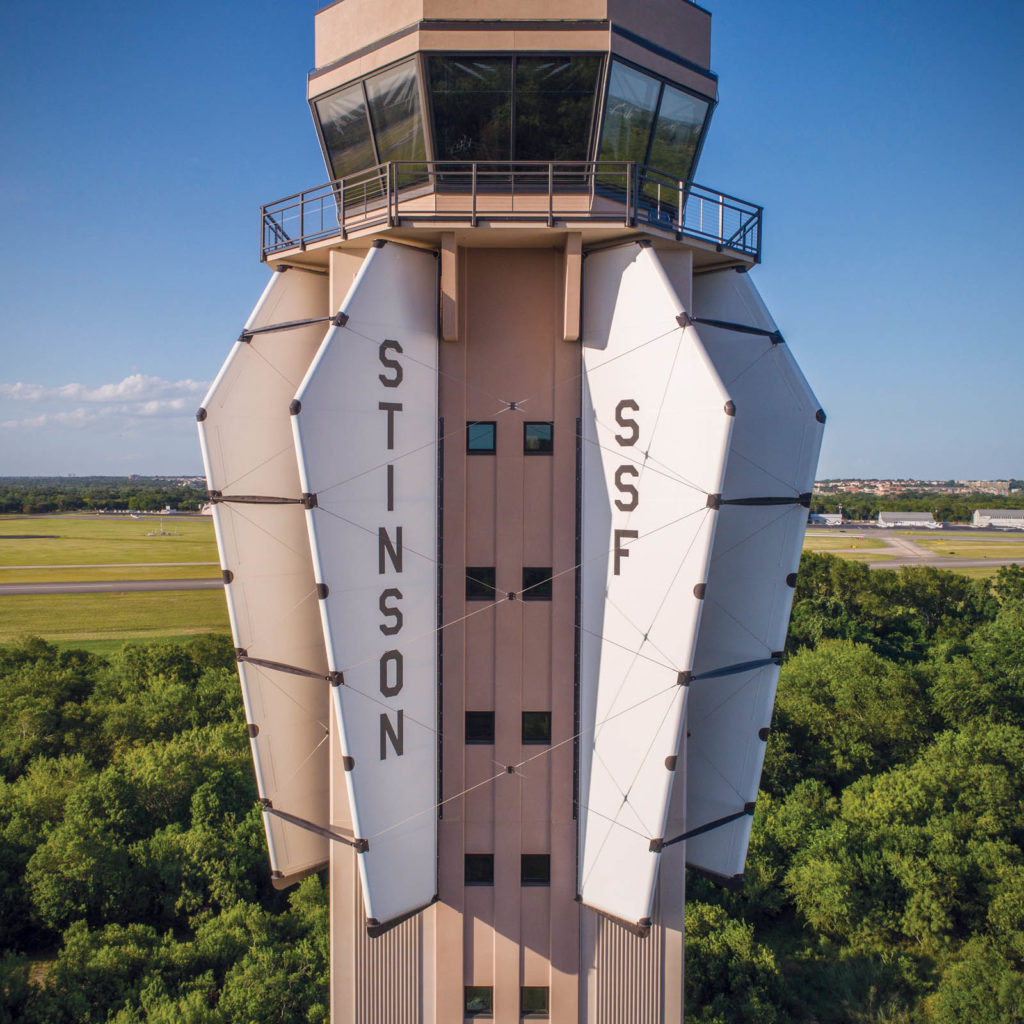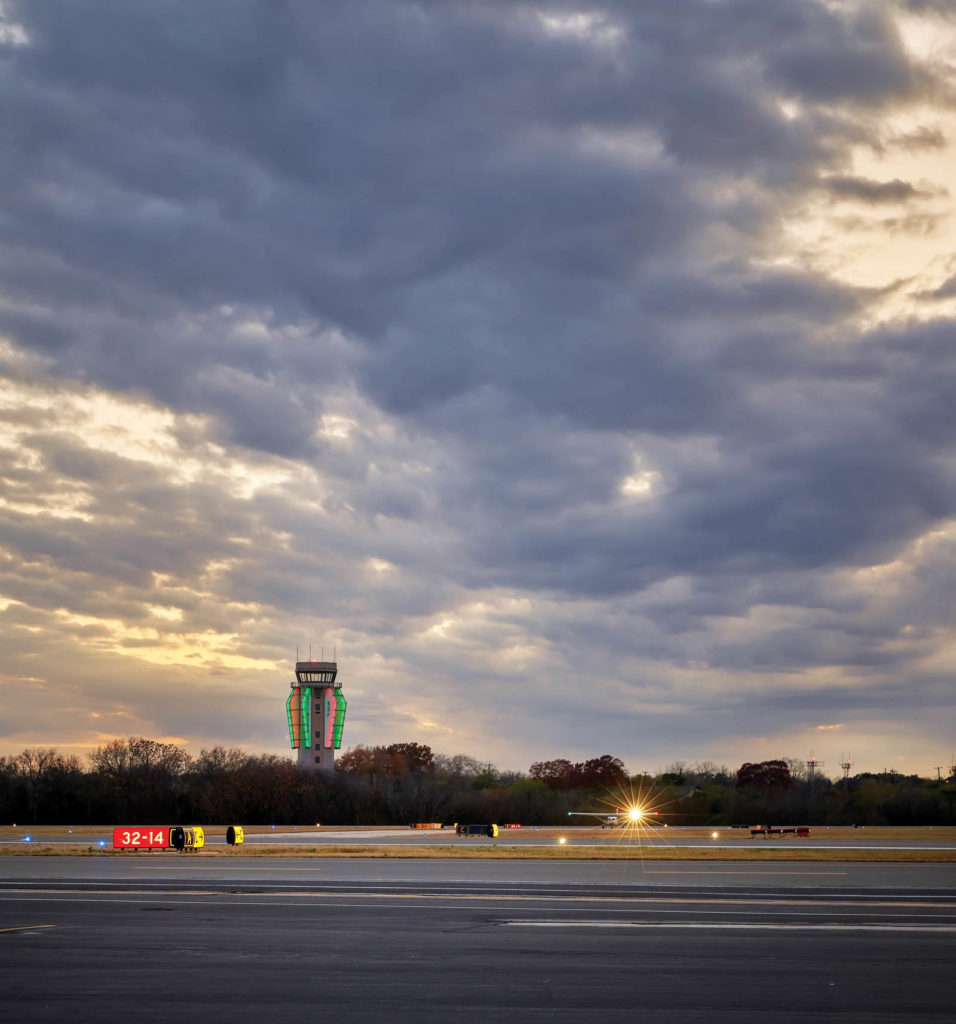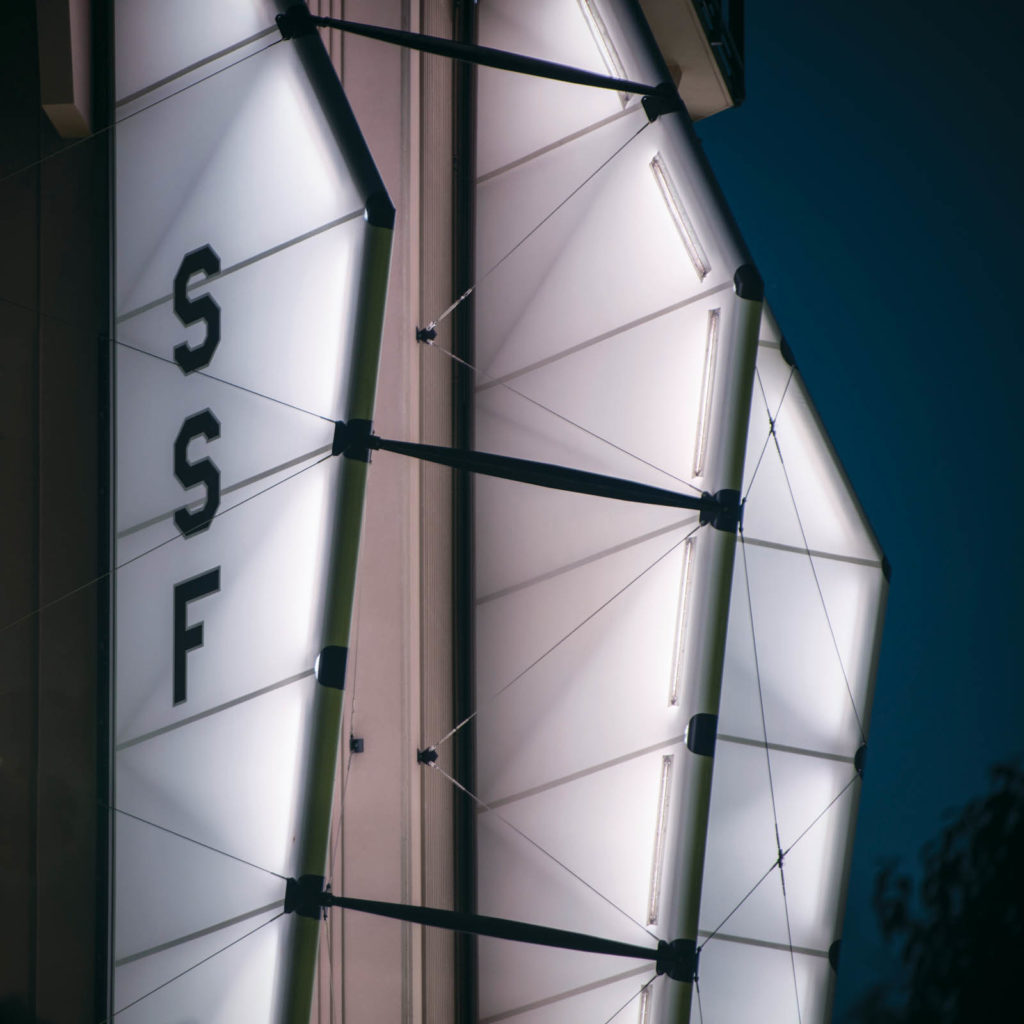International Tension Structures lifts a community’s sense of pride, one 50-foot, membrane-wrapped steel wing at a time.
By Holly Eamon
Architecture without a definitive function is not an easy sell. But it’s rarely a regret. “The concept is hard for people to digest, especially early on in a project,” says Jacob Schwartz, director of engineering and construction, International Tension Structures (ITS), Phoenix, Ariz. “Sometimes even a shade component isn’t functional enough, so you need to include the right people from the start who can take on those arguments and see a vision through.”
This is where ITS shines as a custom tensile membrane structure contractor. “I’ve never had a client come back and say, ‘I wish we wouldn’t have added that component.’ It’s always the exact opposite,” Schwartz says. “The trickier or more complicated the project, the more we gravitate toward it.”

An iconic inquiry
ITS received a unique opportunity to demonstrate this over two years ago when a group of San Antonio, Texas-based architects—Brantley Hightower of HiWorks and Jay Louden and Rebekah Perez of Work5hop—reached out to collaborate on a concept they developed for a local design competition for an air traffic control tower at Stinson Municipal Airport. Built to commemorate more than 100 years of aviation at Stinson, which the United States Army Air Forces used as a training base during World War II, the tower was lacking in aesthetic appeal.

Wrapping the wings
Their winning design, “Wings over Stinson,” features eight 50-foot-long, illuminated airplane wings flipped upright and attached to the side of the tower. After multiple trips to San Antonio to finalize the construction package, Schwartz and his team mocked up a full wing in Phoenix—where they manufactured each final component—for the builder and architects to inspect before giving the green light.
Each wing’s internal structural components are composed of galvanized steel. The 8-inch-diameter HSS tube and the internal webbing, made of a 2-inch square steel tube, form a truss to provide structural integrity, similar to what an actual airplane wing would have to support rigidity. A steel plate and angle running the entire length of the wing forms its spine.
The skin of each wing was manufactured from a Type II PVC-coated polyester membrane. This single membrane spans from one side to the other as it wraps around the front leading edge of the wing and envelops the entire frame. “It was important for the pieces to look like the wings they represent and be a certain color—not too yellow, not too white,” Schwartz says. And because they were designed to light up from the inside, via LED light fixtures attached to the steel, good light transmission was required. The whiteness of the material they selected, TX30-II by Serge Ferrari, was spot-on. “We also chose it for its strength and durability and the way it allowed us to apply the graphic component.”
Similar to the historic planes they epitomize, the wings appear to have registration codes painted on their exterior. But no paint was used. “We cut the TX30 lettering out of the membrane and then welded a piece of black PVC-coated polyester to the membrane where we had negatively cut the numbers and letters into the fabric,” Schwartz says. “It looks like we painted it on, but we really welded another material to it. This approach worked really well.”
Complexities take flight
Wrapping a 50-by-20-foot steel frame with one membrane panel eight separate times was no easy feat. “Starting with the wing on the ground, we had to attach the membrane to one side and then flip the whole thing over to attach the other side; it was quite a process,” Schwartz says.
The lighting added another complication. “Once the fabric was on, there was no way to access the wing’s light fixtures, so we needed to come up with a way to provide that access for future maintenance,” Schwartz says. To solve this, they incorporated eight zippered access pockets on each wing.
Once the fabrication was complete, the challenges grew more complex, from transportation to installation. Stacked on top of one another, the wings were shipped to San Antonio by truck. “That was a trying time,” Schwartz recalls. “There was a lot of risk of them being damaged on the road.”
Schwartz and his crew—including the crane operator—also made the trek. “We wanted to do all of the rigging and erection ourselves in San Antonio because we were all so close to it from the beginning,” Schwartz says. “I don’t know if the installation would have been as successful if we had hired a local crew once we were there.”
Critical connections
The team spent a week on-site finalizing the assembly. Each wing was lifted with a single crane using a double pulley system, then lowered and turned vertically until it reached position. “If the wind came up even a little, we had to shut down the work,” Schwartz says.
Cables tie the wings together and back to the building. “We also added compression struts—about four per corner—to help attach the wings to one another and provide additional rigidity and support for the whole structure,” Schwartz says. The spine of each wing is bolted to the tower as well.
A catwalk on top of the tower intensified the level of difficulty. “The wings had to fly up underneath the catwalk in order for us to attach them to the building, but it was blocking us from getting them close enough to attach,” Schwartz says. By temporarily mounting a “clamp plate jig steel assembly” to the outside of each wing, installers were able to balance the wing against the catwalk enough to move it closer to the tower. “This was just one more challenge we had to take head-on with our approach of not taking no for an answer,” Schwartz says.
Working with the site’s electrical contractor, they also hardwired the light fixtures—roughly 10 per wing—to the building’s electrical system.
Installation was completed in 2018, with a ribbon-cutting ceremony attended by city and state officials in March 2019. Schwartz was happy to hear it exceeded expectations.
“Even thinking back to the mock-up, the architects and builder were surprised at how closely it matched their vision, but not everyone was on board. After the project was done, I heard that even the nonbelievers were ecstatic,” Schwartz says. “It’s one thing to look at this structure during the day, but when you see it lit up at night, you get a feel for how symbolic it is. This community will forever know those wings and that tower as their home, and we’re very proud of that.”
Holly Eamon is an editor and writer based in Minneapolis, Minn.
SIDEBAR: Collaboration is key

The Stinson air traffic control tower project’s architects already had a design when they approached Jacob Schwartz and his team at International Tension Structures, but a key contributor to the project’s success was the collaboration between them as they finalized the design and construction documents together. “We really like to roll up our sleeves and pair up with design teams,” Schwartz says. “The success rate when we are engaged is a hundredfold better than it is when we are brought in after the fact.”
 TEXTILES.ORG
TEXTILES.ORG


